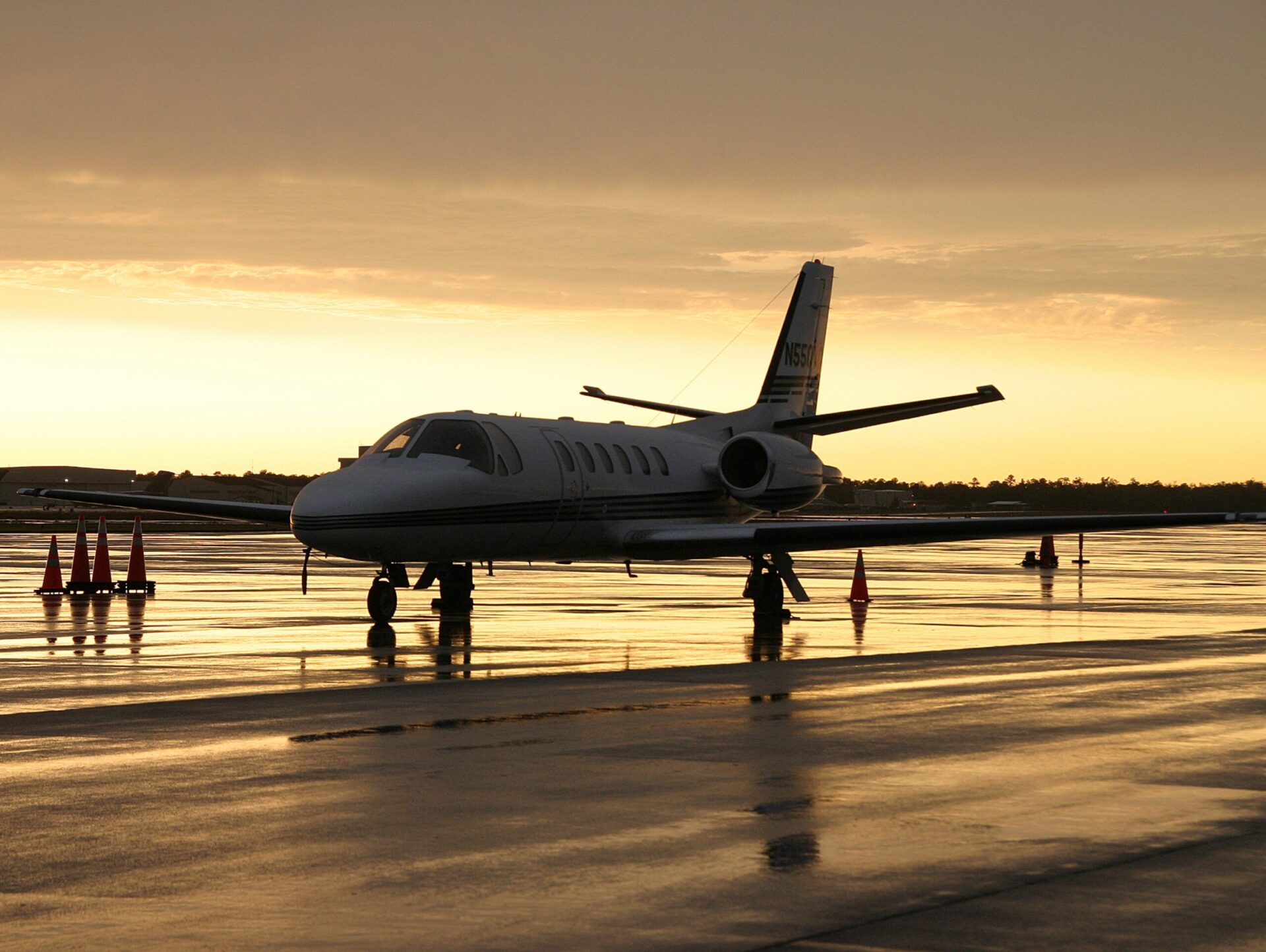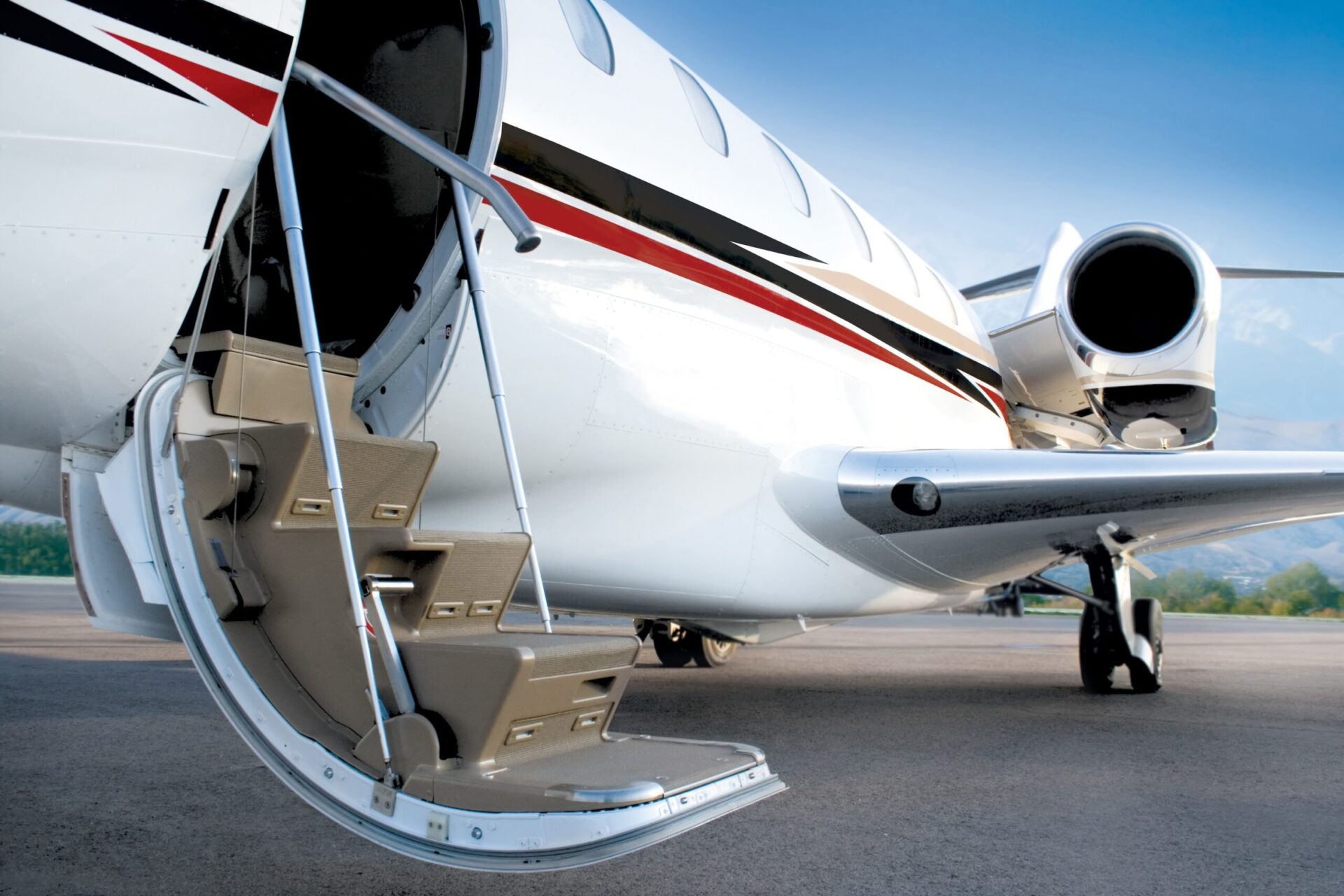Fractional jet ownership is a concept that allows individuals or companies to buy a share in an aircraft, similar to owning shares in a company.
Instead of shouldering the full cost of purchasing and maintaining a private jet, fractional ownership permits you to own a certain percentage of the jet.
Your ownership fraction typically corresponds to a certain number of flight hours or days per year.
This model is particularly suited for those who fly between 50 to 400 hours per year, offering the luxury and convenience of a private jet without the full expense and responsibility of outright ownership.
Fractional ownership of a private jet is a popular option for those who want the freedom that comes with full aircraft ownership but without as many headaches.
Overview of Fractional Ownership
Fractional ownership allows you to purchase shares in the ownership of a single aircraft.
The shares that can be purchased range from 1/16 to 1/2 ownership of a private jet. The purchasing is done through a third party – i.e. a fractional share provider.
One of the most popular companies that provide fractional ownership is NetJets.
The flight time usage of the aircraft that you receive is in direct proportion to the ownership that you have of the aircraft.
Most fractional ownership programs expect the aircraft to be flown for 800 hours per year. Therefore, your ownership stake is a proportion of the total 800 hours.
As a result, if you own 1/16 of an aircraft you would expect to be able to fly for 50 hours per year. 1/2 ownership would result in having 400 hours at your disposal.
Depending on the contract and company, your certain number of hours will vary, along with your shares in their aircraft.
Importantly, despite purchasing a share of an aircraft it is unlikely that you will always be flying on “your” jet.
Companies that offer these fractional ownership programs – like NetJets – have large fleets of aircraft. Therefore, it makes more sense for these companies to use the aircraft that is closest to you.
As a result, most fractional jet ownership programs will actually give you access to multiple aircraft, rather than just one particular aircraft.
This is beneficial as there will almost always be an aircraft ready and you can fly different aircraft models to better meet your mission requirements.
At the end of your ownership term – usually five years – you are able to sell your share back to the operator at a fair market value.
However, fractional owned aircraft are typically flown more than aircraft owned by just one individual or entity. Therefore, the market value will likely be lower than an equivalent aircraft that has sole ownership.

Fractional Jet Ownership Advantages
There are many advantages that come with fractional ownership, such as:
- Lower up-front capital outlay compared with full ownership
- Guaranteed aircraft availability and aircraft worldwide
- Depreciation benefits
- Choice of type of aircraft
- Planes are professionally managed and maintained
- No charges (generally) for deadheading or repositioning costs
- Possibility of guaranteed plane buyback
Fractional Private Jet Ownership Disadvantages
Of course, there are also some disadvantages that come with fractional ownership, such as:
- Can be relatively expensive to use per hour as planes are used more heavily
- There are limits on peak flying dates
- Liability could be high, depending on whether the owner or operator is in operational control
Fractional Ownership Cost Breakdown
Let’s take a look at the costs associated with fractional jet ownership.
Depending on the share of the aircraft and the size of the aircraft, the initial upfront fee is likely to be the most significant. This is the amount that you pay for your share of the aircraft.
This can be roughly calculated based on the initial acquisition cost of the aircraft and the proportion that you wish to own.
The cost of these shares varies depending on the type and size of the jet.
As a rough estimate, for light jets (which can typically seat up to 7 passengers), a 1/16th share might cost around $200,000 to $500,000.
Midsize jets (seating 7-9 passengers) could range from $350,000 to $750,000 for a 1/16th share.
Large jets (able to accommodate more than 9 passengers) could cost between $900,000 to $2 million for the same share size.
If you wanted a 1/8th share of the aircraft you can roughly double those numbers.
After the initial acquisition fee expect a monthly maintenance fee. This value will include costs such as the pilot’s salary, insurance, maintenance, and the cost of keeping the plane in a hangar.
Additionally, expect to pay an occupied hourly fee This fee covers fuel, maintenance, and in-flight catering whilst you’re onboard the jet.
There may also be additional miscellaneous fees, such as a fuel surcharge.
Therefore, the cost of fractional jet ownership typically starts from at least $200,000 and can go up to the cost of a new private aircraft.

Fractional Ownership Program Options – Netjets, Flexjet, & Planesense
When it comes to finding a fractional ownership program
There are several highly reputable programs and providers available for individuals who are interested in fractional jet ownership.
These programs present a remarkable opportunity to indulge in the luxury and convenience of private jet travel, all without the hefty costs associated with full ownership. Some of the most well-known and respected companies in this industry include NetJets, Flexjet, and PlaneSense, each offering their own unique set of benefits and advantages.
NetJets
NetJets is one of the leading providers in the world of Fractional Jet Ownership, offering a variety of programs tailored to cater to the unique needs of their customers.
With a vast and diverse fleet ranging from light to large-cabin jets, NetJets allows fractional owners to choose the aircraft type that suits their needs best.
Owners buy a share in an aircraft type, and the size of their share determines the number of hours they can fly each year.
With NetJets, fractional owners enjoy the flexibility and convenience of flying on their own schedule, while also benefiting from professional management services that handle all aspects of aircraft maintenance, crew training, and flight planning.
The company’s commitment to safety, service, and reliability has positioned it as a preferred choice among those considering private jet fractional ownership.
Flexjet
Flexjet is another leading provider in the Fractional Jet Ownership world, renowned for its exceptional service and a broad range of aircraft.
With Flexjet, individuals can purchase fractional shares in a specific aircraft type, thus gaining access to private jet travel for a predetermined number of hours each year.
What sets Flexjet apart is its dedication to personalized service – owners are assigned a dedicated customer service representative who handles all the details, from scheduling flights to arranging for ground transportation and catering.
Flexjet also prides itself on its top-notch safety standards, highly trained pilots, and a modern, well-maintained fleet of aircraft.
This commitment to safety and customer service excellence makes it a popular choice for private jet fractional ownership.
PlaneSense
PlaneSense is another notable player in the Fractional Jet Ownership market, particularly acclaimed for its fleet of efficient, versatile aircraft.
The company offers fractional owners a distinct advantage with its Pilatus PC-12 fleet, aircraft known for their capabilities to land at smaller, less crowded airports, thus providing access to more locations.
PlaneSense fractional owners acquire a share in a specific aircraft and gain a certain number of flying hours each year, similar to other programs.
The company stands out for its dedicated customer service, rigorous safety standards, and emphasis on owner value.
Its high service standards, combined with the unique capabilities of its fleet, make PlaneSense a compelling choice for those considering private jet fractional ownership.

Who Should Fly Using Fractional Ownership?
Fractional ownership makes sense in quite a few circumstances.
Ultimately, it comes down to flight time and commitment.
Whole aircraft ownership is a popular comparison and almost an alternative to enrolling in a fractional program.
You should opt for fractional ownership if you fly frequently enough and, crucially, know how many hours you will realistically fly over the course of a year.
If the hours don’t add up to justify whole aircraft ownership then fractional is a good step down.
Additionally, fractional ownership grants you more freedom in terms of changing aircraft type and not restricting yourself to just one aircraft.
Moreover, full ownership requires more logistics, more financial risk, and generally higher administrative costs.
Alternatively, a jet card will likely be a better option if you are flying enough to block buy hours but not enough to justify a share in an aircraft.
If it is your first private aviation experience, then charter flights or empty legs should always be the first step to avoid making a hefty financial commitment.
Full Ownership Vs Fractional Ownership
Fractional ownership offers numerous advantages over full ownership of a private jet.
With fractional ownership, owners are relieved of the burden of handling all the intricate logistics and exhaustive maintenance that come with full ownership.
This not only saves time but also allows owners to focus on their core activities without worrying about the operational aspects of their aircraft.
Moreover, fractional ownership provides unparalleled flexibility in terms of aircraft options.
Owners have the freedom to switch between different models within their fleet, depending on their specific travel requirements.
Whether it’s a sleek and efficient business jet for corporate trips or a spacious and luxurious aircraft for family vacations, fractional ownership offers a wide range of choices to cater to diverse needs.
On the other hand, full ownership grants complete control and exclusivity over the private jet.
It can be a preferable option for individuals who frequently utilize their jet or have particular customization preferences.
With full ownership, owners have the liberty to personalize their aircraft according to their unique tastes and preferences, ensuring a truly tailored and exceptional flying experience.
Both fractional ownership and full ownership have their merits, and the choice ultimately depends on individual circumstances, preferences, and usage patterns.

Jet Cards Vs Fractional Ownership
Jet cards are another option for private jet travel, offering a convenient and flexible way to experience the luxury and convenience of flying on a private jet.
With jet cards, individuals or businesses can purchase a specific number of flying hours at a fixed price, providing them with the freedom to travel at their own pace.
Unlike fractional ownership, which grants ownership shares in an aircraft, jet cards offer a more accessible approach without long-term commitment.
Whether you’re a frequent traveler seeking the ultimate convenience or a business looking for a flexible travel solution, jet cards can be an ideal choice to elevate your travel experience.
Alternative Private Aviation Flight Options
There are 6 ways that you can fly by private jet with fractional ownership being just one of them.
The other options that are most similar to fractional ownership are jet cards and whole ownership which have been compared above.
In recent years the line between fractional ownership and jet cards has been more and more blurred.
Therefore, it can be hard to determine which one will actually fit your needs better.
Additionally, if you are making many unique missions or not flying too often, then a private jet charter is a good way to ensure that you can always meet your mission needs.
Featured Image: Alexey Repka / Shutterstock.com



